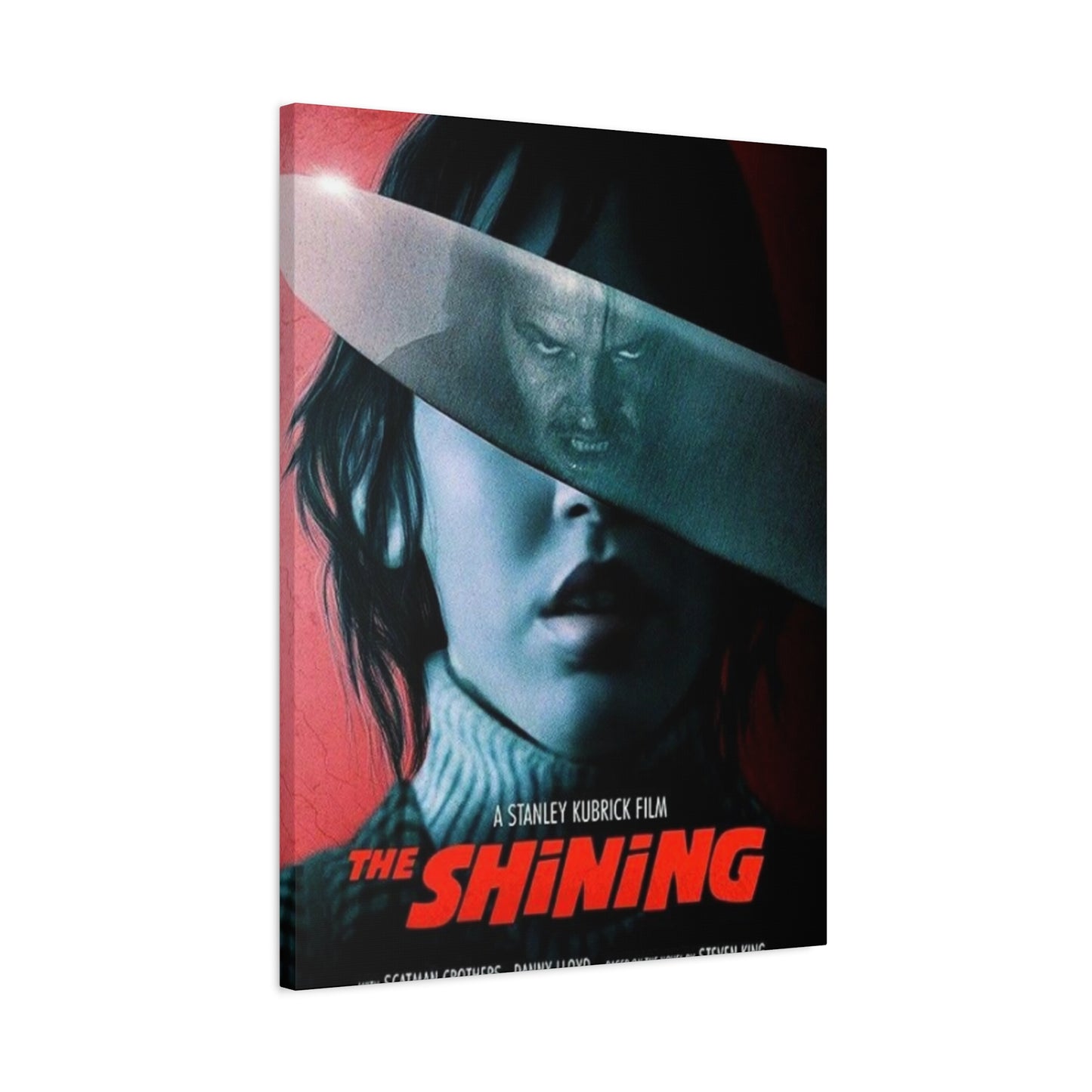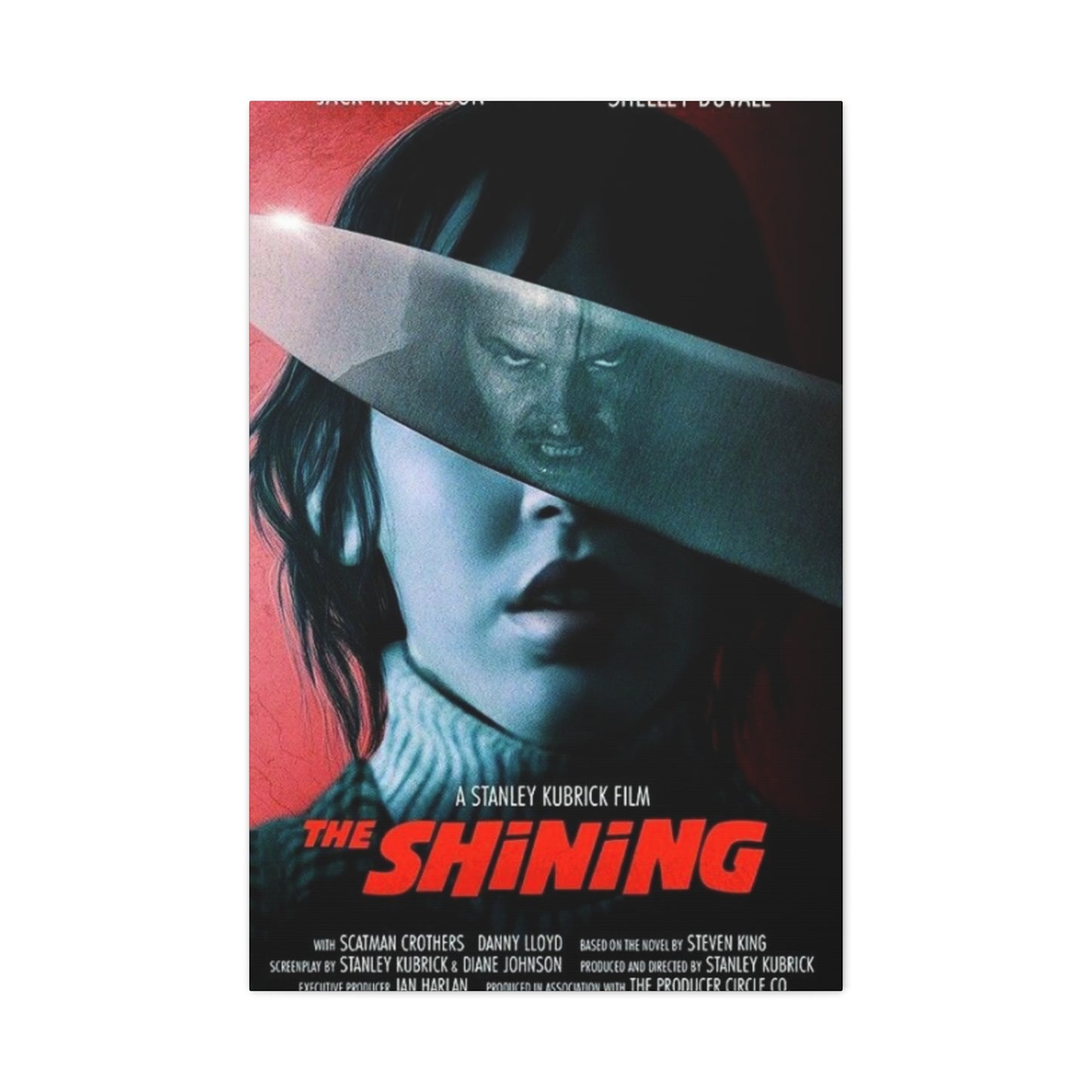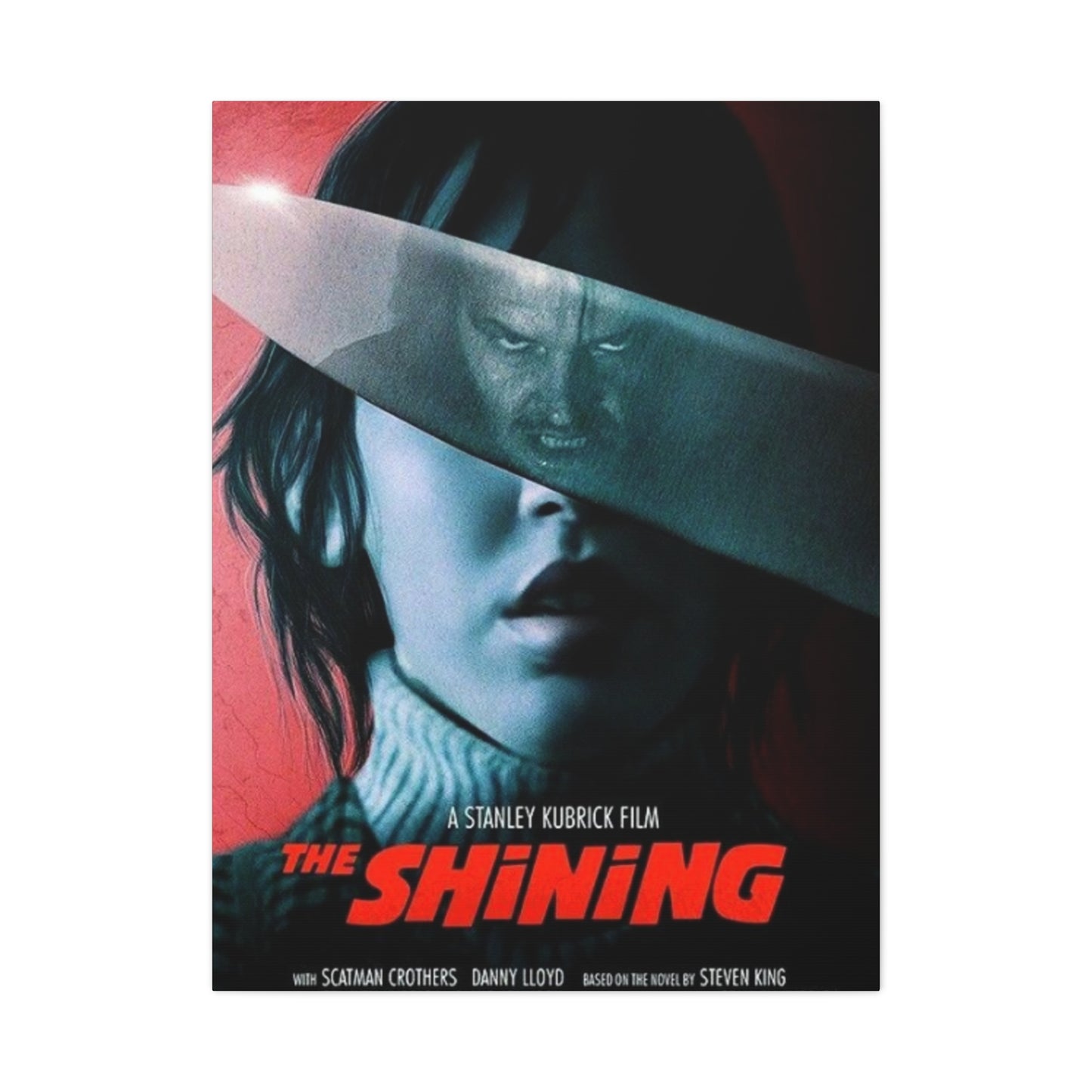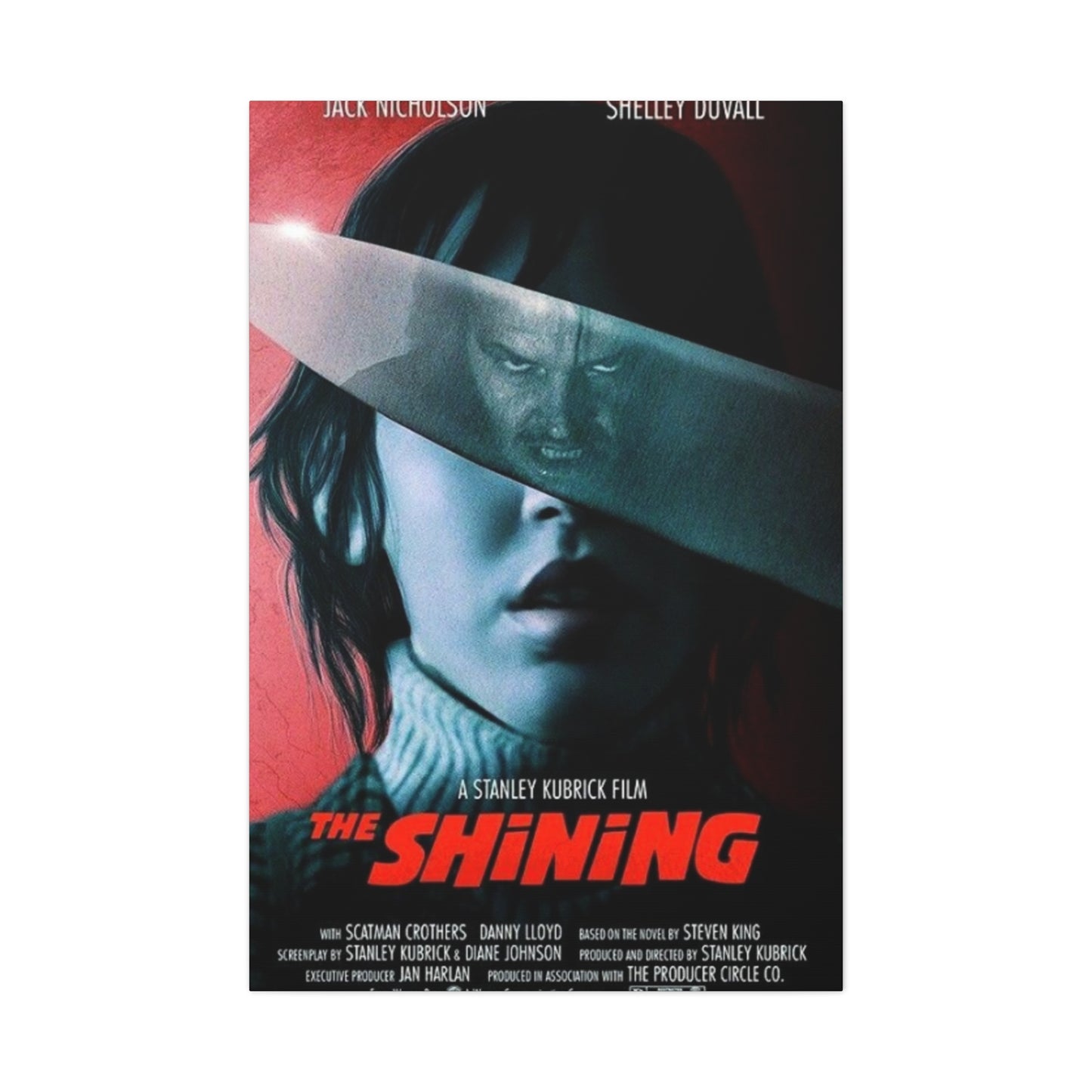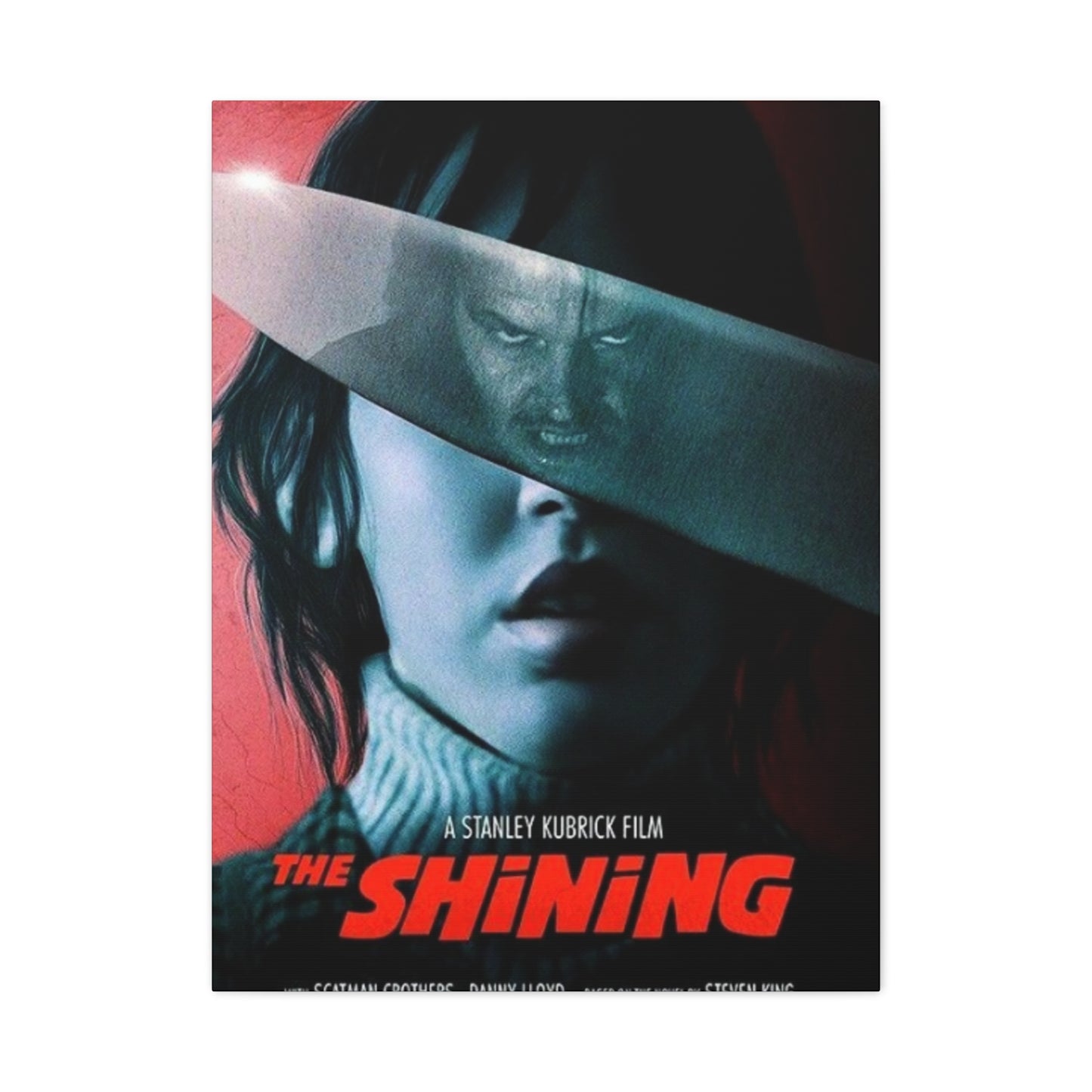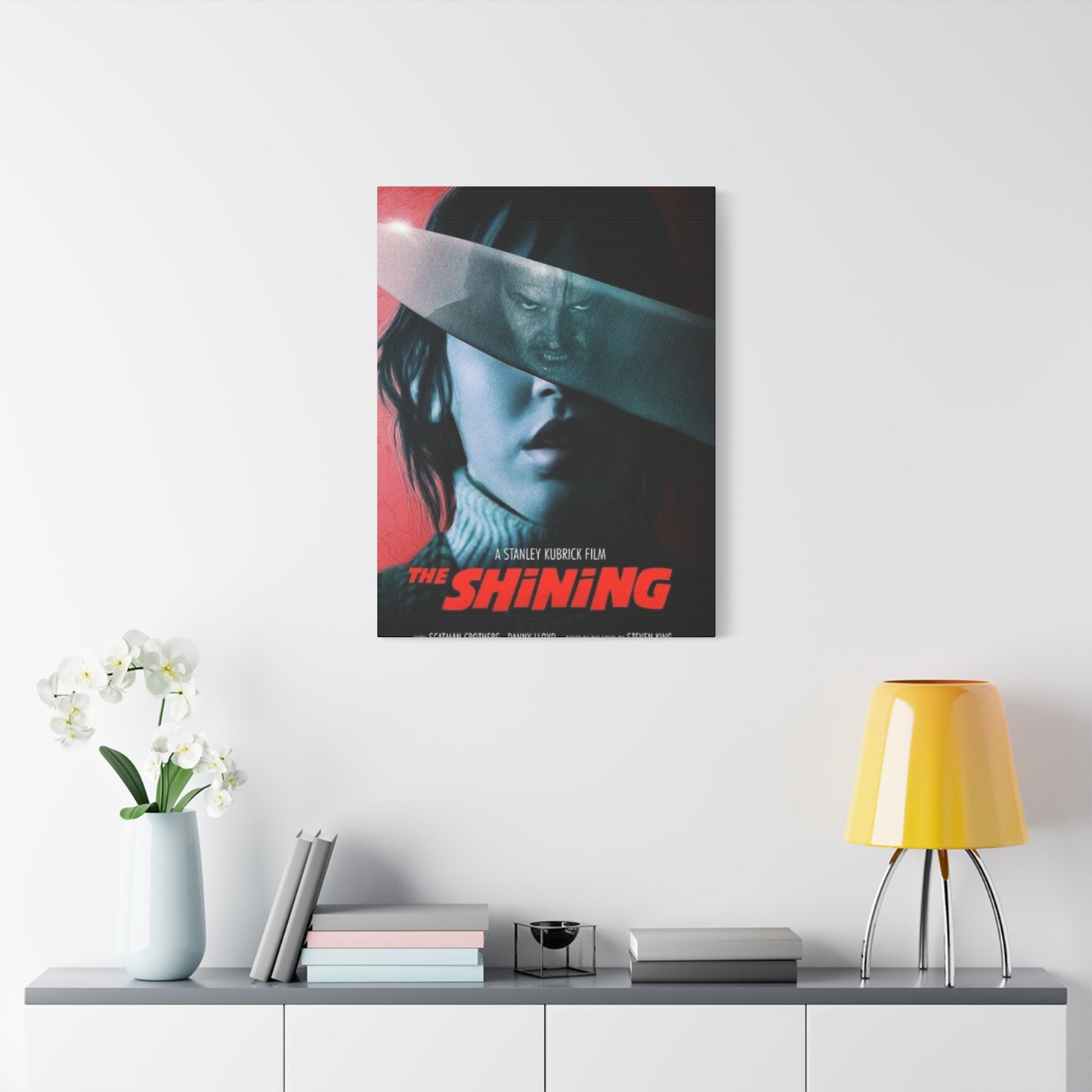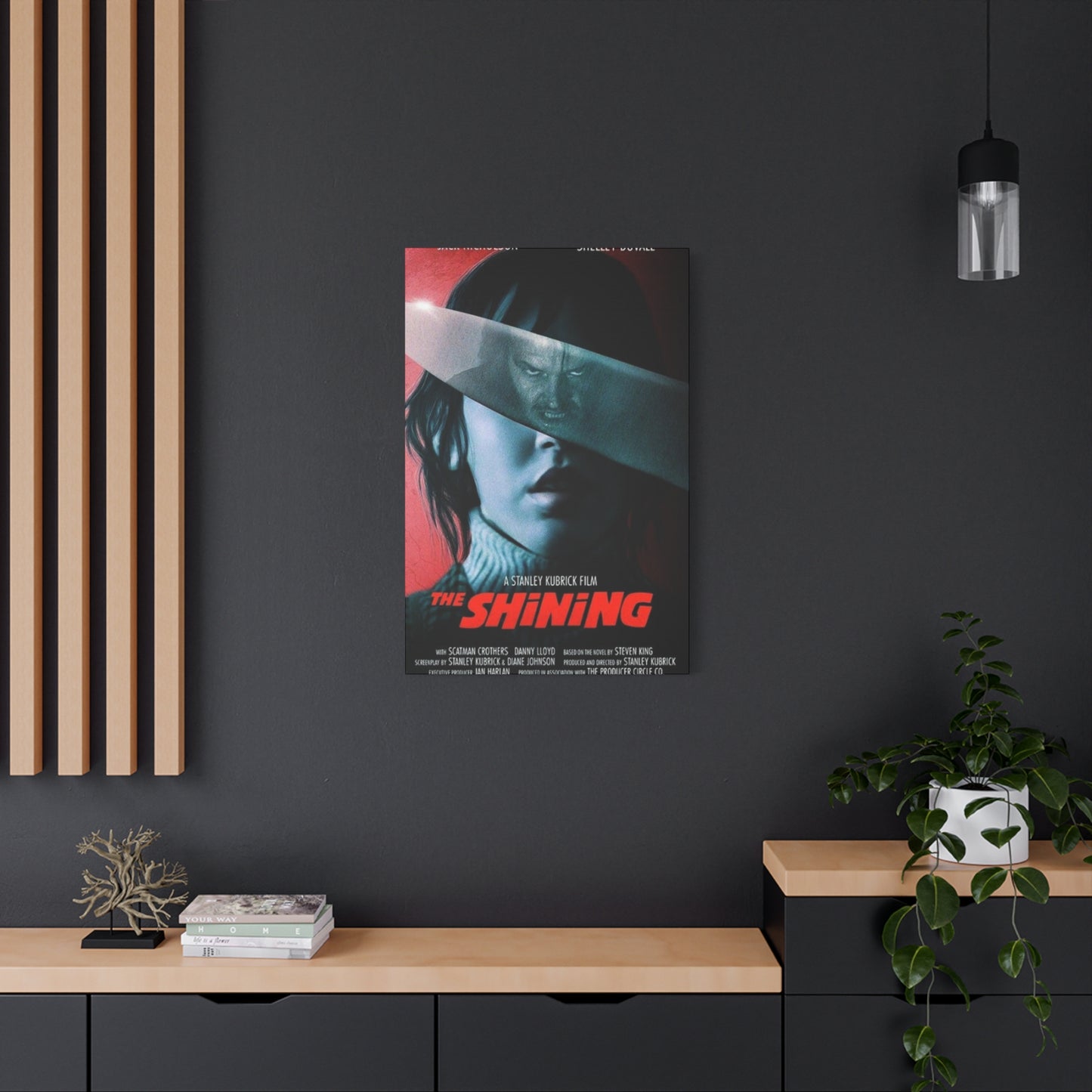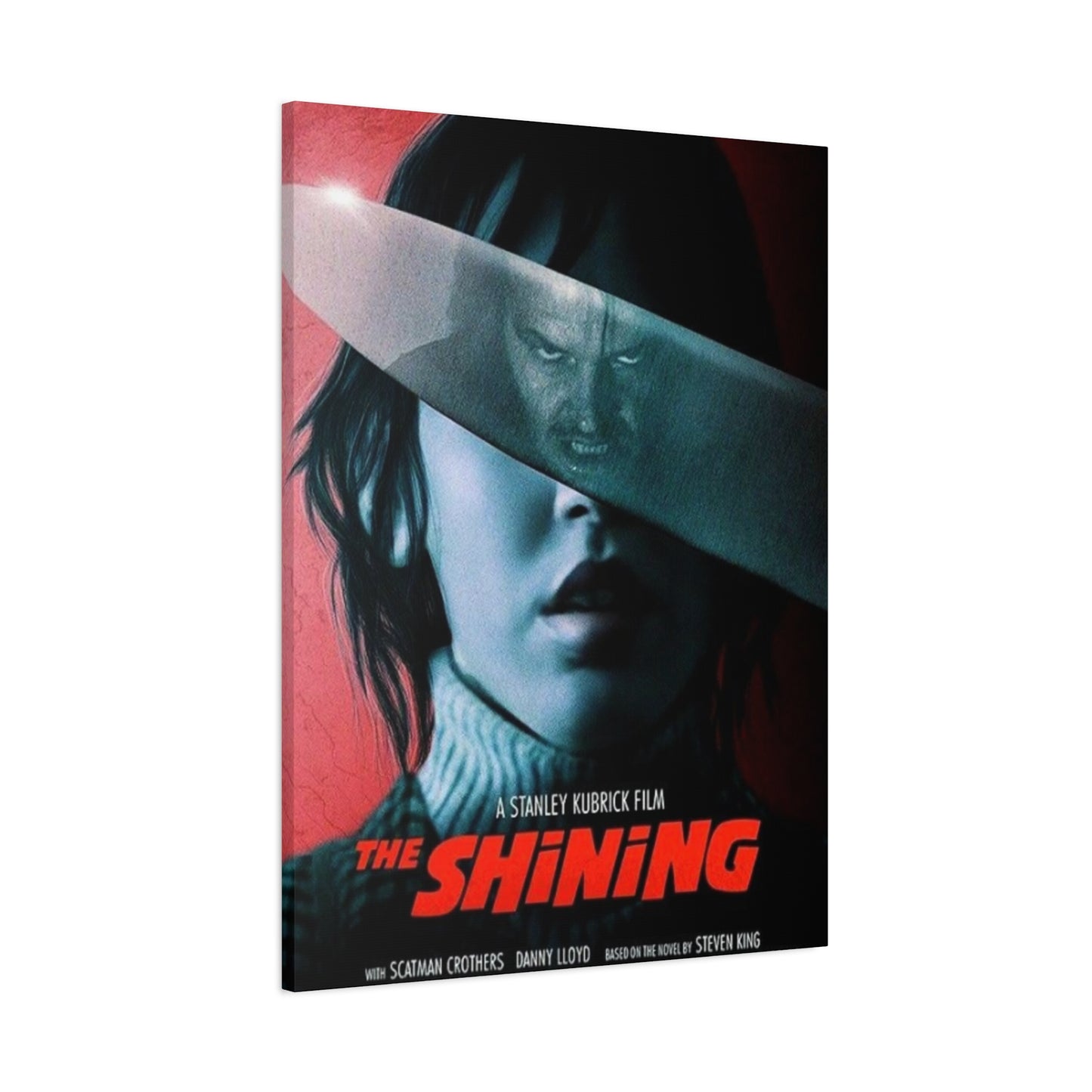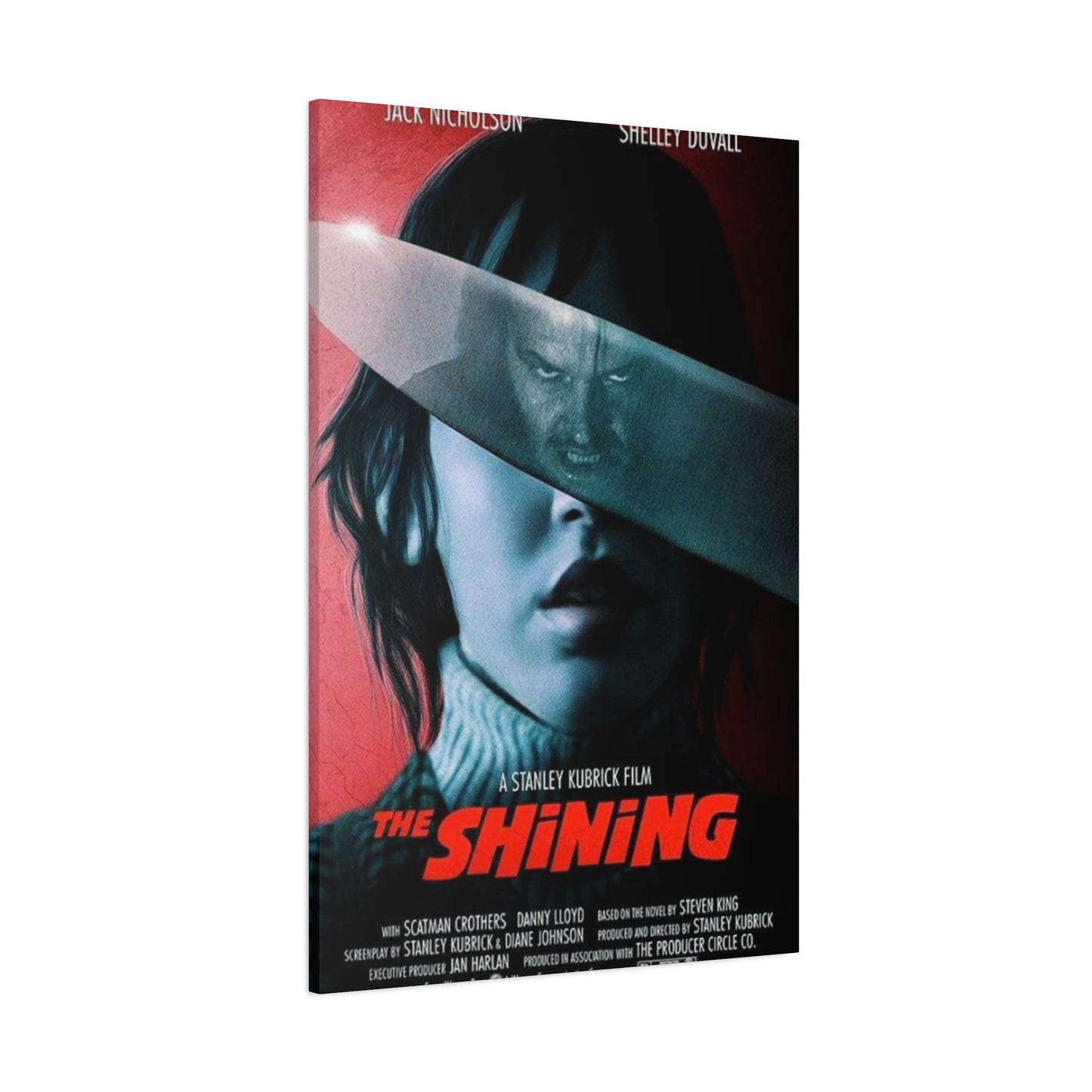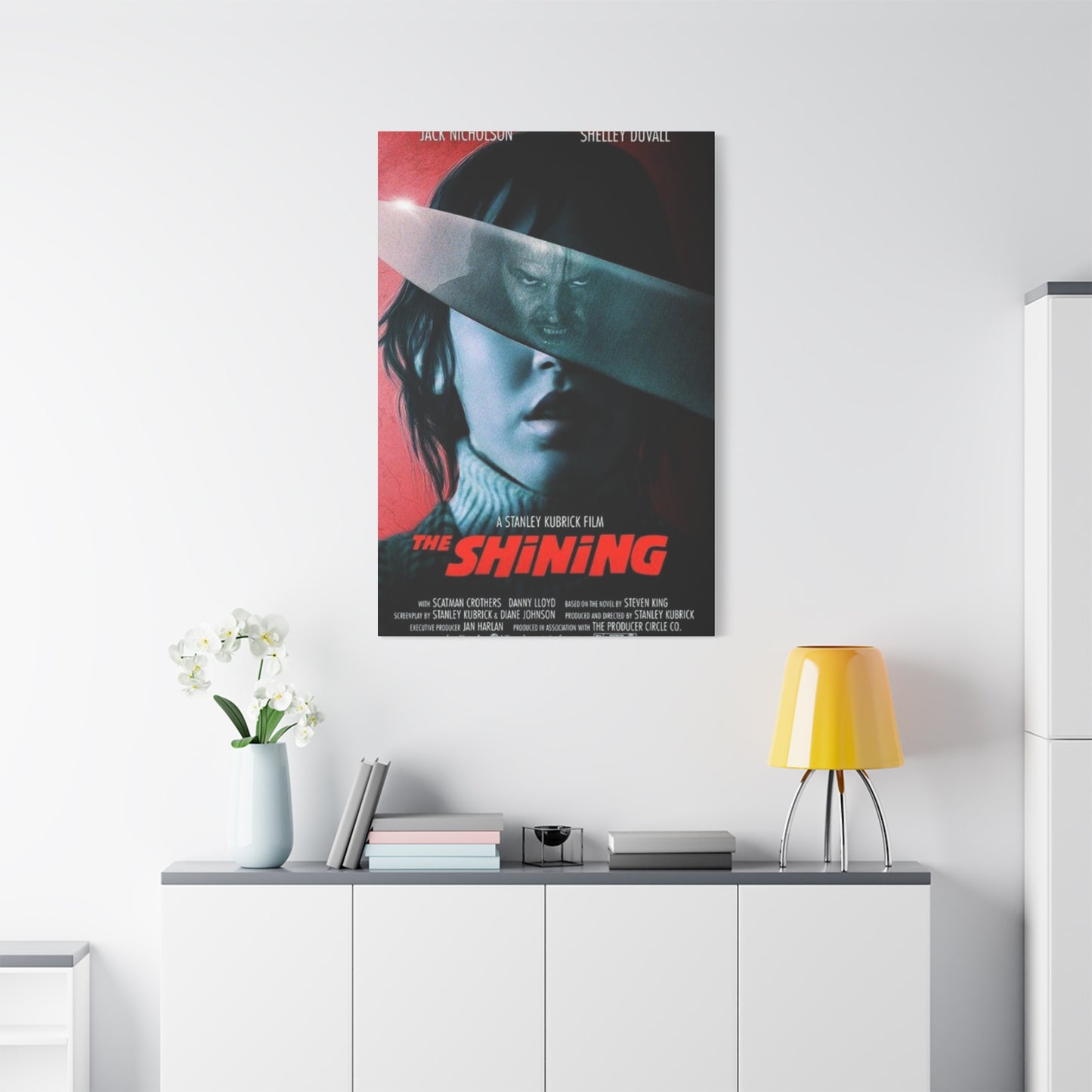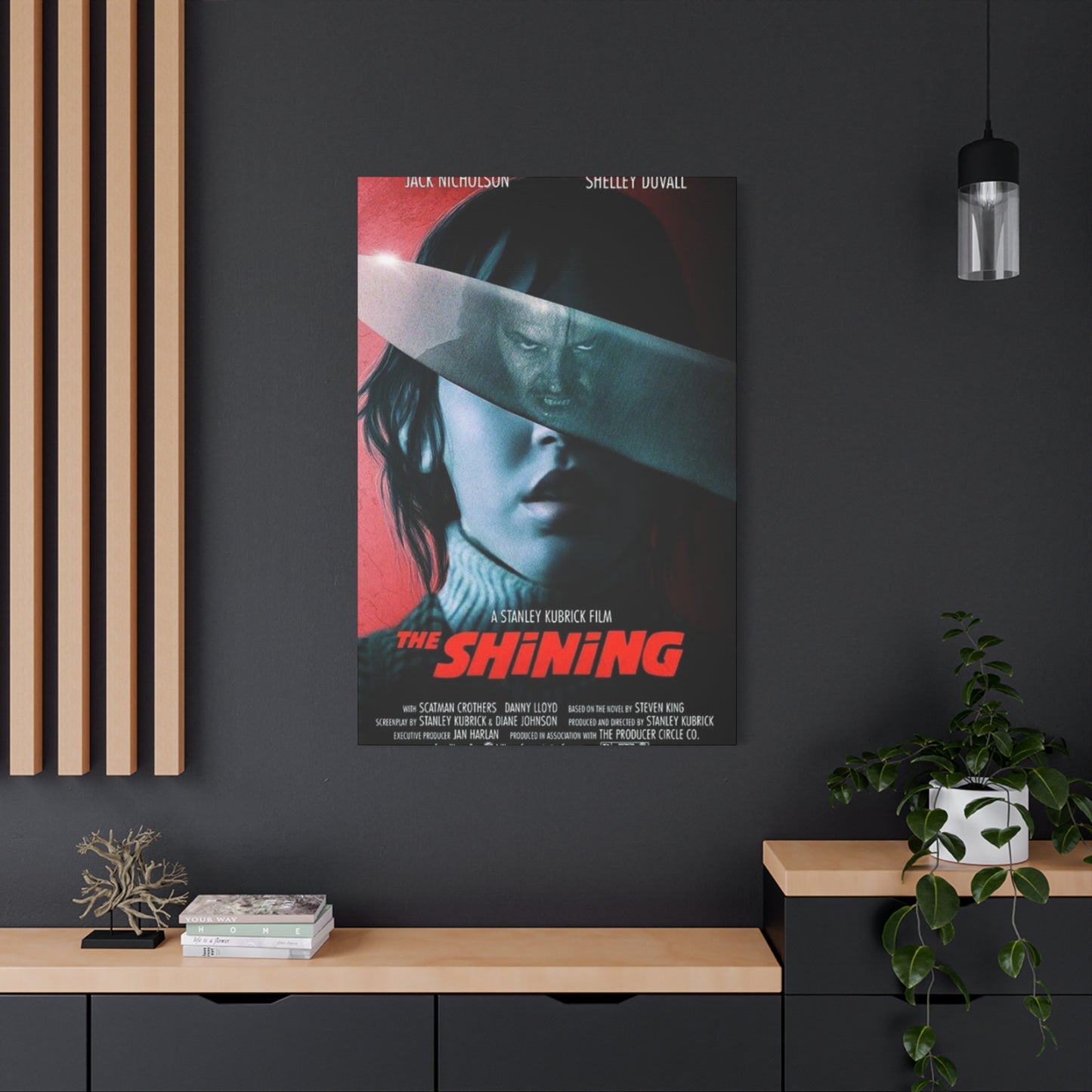Bring Kubrick's Masterpiece Into Your Home: The Shining Horror Movie Poster Wall Art Collection
The world of cinema has given us countless memorable moments, but few films have left as lasting an impression on popular culture as Stanley Kubrick's 1980 psychological thriller. When you choose to incorporate artwork inspired by this legendary film into your home, you're not just adding decoration to your walls—you're making a statement about your appreciation for cinematic excellence, atmospheric storytelling, and the kind of art that challenges conventional interior design norms. This iconic movie has transcended its original medium to become a source of inspiration for artists, designers, and collectors who recognize the power of its imagery and the cultural weight it carries in the realm of horror cinema.
The decision to bring this particular film's artwork into your personal space goes beyond simple fandom. It represents an understanding of how visual storytelling can transform environments, create emotional resonance, and serve as a focal point for conversations about art, film history, and the evolution of the horror genre. Whether you're a longtime admirer of Kubrick's work, a collector of horror memorabilia, or someone who appreciates bold visual statements in interior design, artwork from this film offers a unique opportunity to merge multiple interests into a cohesive aesthetic choice that reflects your personality and taste.
Captivating Elements of Horror Cinema Artwork in Your Interior Design
When you introduce artwork from this legendary psychological thriller into your home, you're tapping into something far more profound than ordinary wall decoration. This particular film has achieved a rare status in cinema history, where its visual language has become instantly recognizable across generations. The imagery associated with this movie carries with it decades of cultural significance, artistic innovation, and a distinct aesthetic that has influenced countless creators in various media.
The appeal of incorporating such artwork into your living spaces stems from multiple factors that work together to create a compelling visual experience. First and foremost, the film's visual composition was meticulously crafted by one of cinema's greatest directors, known for his obsessive attention to detail and innovative camera work. Every frame of this movie was designed with artistic precision, resulting in imagery that translates exceptionally well to static art prints. The symmetrical compositions, the use of color and lighting, and the psychological weight of certain scenes all contribute to making this artwork particularly impactful when displayed on walls.
Beyond the technical excellence of the film's cinematography, the artwork draws power from the emotional responses it evokes. This movie operates on multiple levels simultaneously—it's a horror film, certainly, but it's also a psychological study, a family drama, and an exploration of isolation and madness. When you display artwork from this film, you're inviting viewers to engage with these complex themes in a way that pure decoration simply cannot achieve. The imagery prompts reflection, discussion, and sometimes discomfort, which can be exactly what makes it so fascinating in a home environment.
The cultural cachet associated with this film also plays a significant role in its appeal as wall art. This isn't just any horror movie—it's a film that has been analyzed, debated, and celebrated by critics, scholars, and audiences for decades. Displaying artwork from this movie signals a certain level of cultural literacy and appreciation for cinema as an art form. It tells visitors that you value work with depth, complexity, and artistic merit, rather than simply following fleeting trends in home decoration.
Another compelling aspect of this artwork is its versatility in terms of emotional impact. Depending on which scenes or imagery you choose to display, you can create vastly different atmospheres in your space. Some images from the film carry a sense of foreboding and unease, perfect for creating a dramatic, moody environment. Others showcase the film's stunning visual symmetry and could work beautifully in a more refined, artistic context. This range allows collectors to find pieces that match their specific aesthetic goals while still drawing from the same iconic source material.
The timeless quality of the film's visual style also ensures that artwork from this movie doesn't feel dated or tied to a specific era. While the film was released in the early 1980s, the isolated hotel setting and the careful attention to composition give the imagery a classical quality that transcends temporal boundaries. This means that artwork from this film can coexist comfortably with both vintage and contemporary design elements, making it a flexible choice for various interior design approaches.
For those who appreciate the intersection of different art forms, this artwork represents a perfect synthesis. It combines the cinematic arts with visual design, pulling iconic moments from a moving picture and transforming them into static images that still carry the weight and emotion of the original scenes. This translation from one medium to another creates a unique type of art object that honors both film history and traditional visual arts.
The psychological dimension of the artwork cannot be overstated. This film is renowned for its ability to create a sense of creeping dread and psychological disintegration, and artwork from the movie retains some of that power. When you hang such pieces in your home, you're creating spaces that have emotional depth and psychological resonance. This can be particularly appealing for those who find standard, sanitized home decor to be bland or uninspiring. The artwork challenges viewers and creates environments with genuine character and presence.
Finally, the artistic community's embrace of this film has resulted in a wide variety of interpretations and styles available in the marketplace. From faithful reproductions of promotional materials to abstract artistic interpretations of key scenes and themes, collectors have access to an extensive range of options. This diversity means that you can find pieces that align perfectly with your personal aesthetic preferences while still connecting to the cultural phenomenon of this legendary film.
Showcasing Cinema-Inspired Prints Throughout Your Living Areas
The process of incorporating printed artwork from this iconic horror film into your home requires thoughtful consideration of several factors that will determine how effectively the pieces integrate with your existing design scheme and how powerfully they communicate their intended aesthetic message. The placement of such artwork isn't simply a matter of finding empty wall space—it's about creating intentional viewing experiences that maximize the impact of these striking images while respecting the overall flow and functionality of your living areas.
When approaching the display of these prints, it's essential to first assess the specific characteristics of each piece you've acquired or are considering. Different scenes and imagery from the film carry distinct visual weights and emotional tones. Some images feature bold, high-contrast compositions that command attention and can serve as dominant focal points in a room. Others might have more subtle color palettes or compositions that work better as supporting elements in a larger gallery wall arrangement. Understanding these characteristics will help you make informed decisions about where each piece will have the greatest impact.
The lighting conditions in different areas of your home play a crucial role in how the artwork will be perceived and appreciated. Prints from this film often feature carefully calibrated color schemes and lighting effects that were integral to the original cinematography. To honor these qualities and ensure the artwork looks its best, you'll want to consider how natural and artificial light interact with the pieces throughout the day. Spaces with controlled lighting that doesn't create glare or wash out the colors will typically showcase these prints most effectively. In rooms with significant natural light, you might need to consider UV-protective glazing or positioning pieces away from direct sunlight to prevent fading over time.
Room function and atmosphere should also inform your placement decisions. The psychological intensity of imagery from this film means it can dramatically alter the mood of a space. In communal areas like living rooms or entertainment spaces where film discussions might naturally occur, these pieces can serve as conversation starters and thematic anchors. However, you might think differently about placement in more private or relaxation-focused spaces like bedrooms, where the unsettling nature of some imagery could create an atmosphere that's either compellingly dramatic or uncomfortably intense, depending on your personal preferences.
The architectural features of your space offer opportunities for strategic placement that can enhance both the artwork and the room itself. High ceilings, alcoves, prominent wall sections between windows, or areas above significant furniture pieces can all serve as ideal locations for displaying these prints. The film itself is famous for its use of symmetry and perspective, so you might consider echoing these visual principles in how you arrange the artwork within your architectural context. Centering pieces on walls, creating balanced arrangements, or using the artwork to draw the eye through a space can all be effective strategies.
Scale relationships between the artwork and its surroundings deserve careful attention. A common mistake in displaying art is choosing pieces that are too small for their intended location, resulting in the artwork getting lost against large wall expanses or being dwarfed by nearby furniture. Prints from this film often feature compositions that benefit from being displayed at a substantial size, allowing viewers to appreciate the details and immerse themselves in the imagery. When selecting sizes and positions, consider the viewing distances—pieces will be observed from and ensure the scale feels appropriate for how the space is used.
Creating cohesive groupings or gallery walls with multiple prints from the film can be an effective way to build a more immersive display that tells a visual story or explores different aspects of the movie's aesthetic. When arranging multiple pieces together, you'll need to consider factors like frame consistency, spacing between pieces, and the visual conversation between different images. Some collectors prefer uniform framing and symmetrical arrangements for a clean, organized look, while others embrace more eclectic approaches that create dynamic, energetic wall compositions.
The relationship between the artwork and nearby furniture and decor items also impacts the overall effect. Placing these prints above sofas, desks, console tables, or other furniture creates visual anchors that tie the room's elements together. However, you'll want to ensure that the furniture style and color don't compete with or detract from the artwork. In some cases, simpler, more neutral furniture pieces allow the dramatic imagery to take center stage, while in other design approaches, you might intentionally create interesting contrasts between different aesthetic elements.
Consider also the sight lines throughout your home and how the artwork will be encountered as you move through different spaces. Placing a particularly striking piece in a location where it's visible from multiple rooms or from an entryway can create moments of visual impact and help establish an aesthetic tone for your entire home. Alternatively, positioning artwork in more intimate settings where it's discovered upon entering a specific room creates different types of viewing experiences that might feel more personal and contemplative.
Infusing Your Space with Cinematic Darkness and Movie Legacy
The act of bringing artwork from this legendary psychological thriller into your home creates a unique intersection between two distinct cultural domains—the world of cinema and the world of interior design. This particular film occupies a special place in both horror history and the broader landscape of artistic filmmaking, which makes artwork derived from it particularly valuable for those seeking to create spaces with genuine cultural depth and aesthetic significance.
When you choose to display artwork from this movie, you're engaging with a multilayered cultural artifact that has accumulated meanings far beyond its original theatrical release. The film has been the subject of countless analyses, interpretations, and homages, each adding new dimensions to how we understand and appreciate its imagery. This rich interpretive history means that artwork from the film carries with it an entire constellation of associations—to specific scenes and performances, to broader themes of isolation and psychological breakdown, to the director's distinctive visual style, and to the evolution of horror cinema as a genre.
The horror elements of the film provide one obvious avenue for thinking about how the artwork functions in a space. Horror as a genre has always walked a fine line between repulsion and fascination, creating experiences that are simultaneously uncomfortable and compelling. Artwork from this film captures that duality perfectly. The imagery can be unsettling, even disturbing, but it's also visually beautiful and meticulously composed. This tension between aesthetic beauty and psychological unease creates a unique type of visual experience that challenges the conventional notion that home decor should be purely pleasant or comforting. By embracing artwork with this kind of complexity, you're creating environments that have genuine emotional and psychological depth.
The classical cinema aspects of the artwork provide another dimension of meaning and value. This film represents a particular approach to filmmaking that prioritizes visual storytelling, meticulous craft, and artistic vision over commercial formulas. The director's reputation for demanding perfection and his innovative techniques in cinematography and production design are legendary. When you display artwork from this film, you're not just celebrating horror—you're celebrating cinema as an art form and honoring the kind of ambitious, visionary filmmaking that pushes boundaries and creates lasting cultural impact.
The interplay between these two aspects—horror and artistic cinema—creates opportunities for sophisticated interior design that operates on multiple levels. In a well-curated space, the artwork can serve different functions for different viewers. Horror enthusiasts will appreciate the connections to one of the genre's most influential works. Film buffs will recognize the cinematic artistry and historical significance. Design-focused visitors will respond to the strong visual compositions and color palettes. And those unfamiliar with the source material may simply appreciate the artwork on its own aesthetic merits, finding the imagery striking and memorable without necessarily understanding all of its cultural context.
This multiplicity of meanings allows the artwork to generate conversations and connections between people with different interests and backgrounds. A piece of artwork from this film on your wall can spark discussions about favorite movies, analysis of horror tropes, appreciation of directorial vision, or debates about interpretation and meaning in art. These conversations transform your living space into something more than just a private retreat—it becomes a social space where cultural engagement happens naturally and organically.
The combination of horror imagery with classical filmmaking excellence also challenges some conventional assumptions about what belongs in refined or sophisticated living spaces. Traditional interior design often relegates anything associated with horror to basements, game rooms, or other peripheral spaces, treating it as adolescent or lowbrow. By displaying artwork from this critically acclaimed, artistically significant film in your primary living areas, you're making a statement that challenges these hierarchies. You're asserting that horror, when executed with artistic vision and craft, deserves the same respect and prominent placement as any other art form.
The way the film blends psychological horror with family drama also makes the artwork particularly relevant for domestic spaces. Unlike horror films focused purely on monsters or supernatural threats, this movie explores the breakdown of family relationships and the dark potential within ordinary human psychology. These themes resonate differently when the artwork is displayed in a home environment, where family life actually unfolds. The tension between the domestic setting of the film and the horror that emerges within it creates a provocative parallel when the artwork occupies your own domestic space.
Presentation Strategies for Horror Cinema Artwork
The way you frame and present artwork from this iconic psychological thriller significantly impacts how the pieces are perceived and how effectively they integrate into your overall design scheme. Framing is not merely a practical necessity for protecting and displaying prints—it's an artistic decision that can enhance, complement, or even transform the artwork itself. When dealing with imagery from such a visually distinctive and culturally significant film, the framing choices you make become part of the overall statement you're creating in your space.
The first consideration in framing these pieces involves understanding the visual characteristics of the artwork itself and selecting frame styles that support rather than compete with those qualities. Many images from this film feature strong geometric compositions, with symmetrical arrangements and carefully controlled color palettes. These characteristics can be honored and enhanced by frame selections that echo the visual language of the artwork. Clean, straight-lined frames in materials like black wood, brushed metal, or simple profiles can complement the architectural quality of many scenes from the film without distracting from the imagery itself.
The color of the frame matters significantly in how the artwork reads within your space. Black frames offer a classic, sophisticated look that works particularly well with the darker, more atmospheric imagery from the film. The black creates a strong boundary between the artwork and the surrounding wall, making the image feel more contained and focused. This can be especially effective for prints with high contrast or dramatic lighting. Alternatively, white or lighter frames create a different effect, potentially making the artwork feel more gallery-like and emphasizing its status as a curated art object. For imagery with warmer tones or when you want the artwork to feel slightly more integrated with lighter-colored walls, natural wood frames can provide warmth without overwhelming the piece.
The width and profile of the frame molding also influences the overall presentation. Thin, minimal frames keep the focus squarely on the artwork itself and work well in contemporary or minimalist spaces where clean lines are prioritized. Wider frames with more substantial molding create a greater sense of importance and permanence, which can be appropriate for larger pieces or when you want the artwork to have a more commanding presence in the room. Some collectors find that the psychological weight and cultural significance of imagery from this film justifies more substantial framing that signals the work's importance.
Matting represents another key decision in the framing process. A mat creates a buffer zone between the artwork and the frame, providing visual breathing room and preventing the image from feeling cramped or constrained. For prints from this film, matting choices should consider both the colors within the artwork and the overall aesthetic you're trying to achieve. Black or dark gray mats can create a sophisticated, gallery-quality presentation that works beautifully with the darker, more ominous imagery from the film. White or off-white mats create a more traditional, formal appearance and can help brighter or more colorful images pop against the neutral surrounding. Some framers also offer custom matting in colors that complement specific tones within the artwork, though this approach requires careful consideration to ensure it enhances rather than distracts from the piece.
The choice between matting and no matting depends partly on the specific print and your design goals. Frameless presentations or frames without mats create a more immediate, modern look where the image extends closer to the edges of the frame. This can be particularly effective for imagery with strong compositional elements that extend to the edges of the composition. However, matting provides important protective benefits, keeping the print surface away from the glass and allowing for air circulation, which is especially important in humid environments or for long-term preservation.
Glass selection represents another technical but important framing decision. Standard glass provides basic protection but can create reflections that interfere with viewing the artwork, particularly in rooms with multiple light sources or windows. Non-reflective or anti-glare glass significantly improves visibility by reducing these reflections, allowing viewers to appreciate the artwork without distraction. For valuable prints or pieces that will be displayed in rooms with significant light exposure, UV-protective glass offers important conservation benefits, filtering out harmful ultraviolet light that can cause fading over time. Museum-quality glazing combines anti-reflective properties with UV protection, representing the premium option for serious collectors.
For those seeking contemporary alternatives to traditional framing, floating frames offer an interesting option. These frames are designed to make the artwork appear suspended within the frame, with visible space between the edge of the print and the inner edge of the frame. This presentation style creates a modern, gallery-like aesthetic and can work particularly well for artwork with clean edges or when you want to emphasize the physical nature of the print itself. However, this approach may not suit all imagery from the film, particularly pieces where you want a more enclosed, contained presentation.
Custom framing versus ready-made frames represents a practical consideration that balances cost, quality, and specificity. Custom framing allows for perfect sizing, ensures high-quality materials and construction, and provides the opportunity to work with a professional framer who can offer expertise on what will work best for your specific pieces. Ready-made frames are more economical and can work well if you find options that fit your prints and match your aesthetic vision. Many collectors use a hybrid approach, investing in custom framing for their most significant or irregularly sized pieces while using quality ready-made frames for more standard dimensions.
Legendary Imagery and Its Lasting Cultural Impact
When we examine why certain imagery from cinema becomes truly iconic and culturally enduring, few examples demonstrate this phenomenon as clearly as the promotional materials and memorable scenes from this particular psychological thriller. The power of these images extends far beyond their original purpose of marketing a film—they have become cultural touchstones that communicate volumes about horror cinema, directorial vision, and the lasting impact of visual storytelling done at the highest level.
The creation of genuinely iconic imagery requires a confluence of factors that rarely align so perfectly. In this case, the original promotional materials were designed to capture the unsettling atmosphere and psychological intensity of the film without revealing too much about its plot or specific scares. This approach resulted in images that suggested danger, madness, and dread through visual composition and expression rather than explicit horror. The effectiveness of this strategy means that decades later, these images still communicate powerfully, even to viewers who may never have seen the film itself.
The visual elements that make this particular imagery so memorable include compositional choices that create immediate psychological impact. Certain promotional images utilize direct eye contact with the viewer, creating an uncomfortable intimacy and sense of being watched. Others employ dramatic lighting that casts portions of faces or scenes in shadow, suggesting hidden dangers and unknown threats. The use of specific color palettes—particularly the interplay of warm and cool tones—creates visual tension that mirrors the psychological tension within the narrative. These sophisticated visual strategies elevate the imagery beyond simple advertisement into the realm of genuine artistic expression.
The cultural resonance of this artwork also stems from its association with broader themes that extend beyond the specific story of the film. The imagery taps into universal fears about isolation, the fragility of sanity, and the darkness that can emerge within family relationships. These archetypal concerns give the artwork a depth of meaning that allows it to function effectively in different contexts and to speak to different generations of viewers. The imagery becomes a shorthand for discussing these complex psychological and social themes, making it culturally useful beyond its entertainment value.
The influence of this imagery on subsequent horror films, promotional materials, and visual culture generally cannot be overstated. Countless later works have paid homage to, referenced, or attempted to capture something of the aesthetic established by this film. This has created a situation where the imagery exists within a vast network of cultural references and associations. When you display artwork from this film, you're not just showing appreciation for a single movie—you're engaging with an entire lineage of visual culture that has been shaped by this influential work.
The artistic pedigree behind the film's visual identity also contributes to the iconic status of its imagery. The director's background in photography and his obsessive attention to visual composition meant that every frame was crafted with artistic intentionality. The cinematographer's innovative techniques and the production designer's meticulous creation of the film's setting all contributed to creating imagery that could stand alone as powerful visual art separate from the narrative context. This artistic foundation ensures that prints and reproductions of this imagery possess genuine aesthetic value, not just nostalgic or commercial appeal.
The psychological complexity embedded in the imagery makes it particularly suitable for contemplative viewing in home environments. Unlike more straightforward horror imagery that relies on shock or explicit violence, artwork from this film rewards extended viewing and interpretation. The subtle details in facial expressions, the careful arrangement of elements within the frame, and the atmospheric qualities of the lighting all reveal more upon repeated viewing. This depth ensures that the artwork remains interesting and engaging over time rather than becoming merely decorative background noise.
The way this imagery has been embraced by both mainstream culture and more selective, artistic communities also speaks to its versatility and power. The film is simultaneously a commercial success that reached wide audiences and a critical darling that has been extensively analyzed in academic and artistic circles. This dual status means the imagery appeals across different taste cultures and can be appreciated from multiple perspectives. Whether viewed as a piece of popular culture, a specimen of cinematic art, or a psychological study rendered in visual form, the artwork offers multiple access points for engagement and appreciation.
The enduring nature of this imagery—its ability to remain relevant and powerful decades after the film's release—also reflects something essential about truly successful visual storytelling. The images don't feel dated or tied to the specific moment of their creation. The timeless quality of the film's setting, the universal nature of its themes, and the classical approach to composition all contribute to imagery that transcends its specific historical moment. This temporal flexibility makes the artwork particularly valuable for collectors and decorators, as it can exist comfortably in contemporary spaces without feeling like a period piece or nostalgic throwback.
The artwork's iconic status also creates a form of cultural communication between the person displaying it and those who view it. When visitors recognize imagery from this film on your walls, an immediate connection is established. You've identified yourself as someone familiar with important cinema history, someone with particular aesthetic preferences, and someone comfortable with darker, more psychologically complex visual material. This communication happens instantly and wordlessly, making the artwork an efficient and effective expression of identity and taste.
Integration Within Contemporary Living Spaces
One of the most interesting aspects of incorporating artwork from this legendary horror film into home environments involves understanding how these pieces—despite their dark subject matter and intense psychological dimensions—can actually enhance and elevate contemporary interior design schemes. The conventional wisdom might suggest that horror imagery belongs only in themed entertainment spaces or the homes of dedicated collectors, but thoughtful integration of these pieces demonstrates how sophisticated design can embrace complex, challenging visual material in everyday living environments.
Contemporary design trends have increasingly moved away from the safe, neutral, and universally pleasant aesthetic that dominated residential interiors for many years. Today's design sensibilities often embrace more personality, more visual interest, and more willingness to incorporate unexpected elements that create genuine character in living spaces. This shift in design philosophy creates perfect conditions for artwork from this film to function as serious design elements rather than novelty items or niche collectibles.
The color palettes found in imagery from this film often align surprisingly well with contemporary design trends. Many scenes feature muted, sophisticated color schemes dominated by earth tones, deep reds, and cool blues that can complement rather than clash with modern furnishing choices. The careful color grading and lighting in the original cinematography means that even dramatic or unsettling scenes often possess a refined color balance that works aesthetically in well-designed spaces. Selecting prints based partly on their color relationships to your existing decor allows you to maintain visual cohesion while still introducing these compelling images.
The architectural elements visible in much of the film's imagery—the geometric patterns of the hotel carpeting, the symmetrical arrangements of doors and windows, the grand scale of interior spaces—also resonate with contemporary design's appreciation for strong structural elements and clean lines. When you hang artwork featuring these architectural qualities, you're introducing visual interest that relates to the physical space around it rather than existing in complete contrast to it. This creates a more integrated, thoughtful aesthetic rather than the jarring effect that can occur when decorative elements feel completely disconnected from their environment.
Scale and proportion play crucial roles in making this artwork function effectively in modern spaces. Contemporary design often favors larger art pieces that make bold statements rather than collections of small, timid decorations. The dramatic nature of imagery from this film actually benefits from being displayed at substantial sizes where the composition, lighting, and details can be properly appreciated. A large, well-framed print from this film can serve as a commanding focal point in a room, providing visual weight and interest that anchors the entire design scheme.
The minimalist tendencies in much contemporary design also create opportunities for this artwork to shine. When surrounding decor is kept relatively simple and uncluttered, a striking piece of horror cinema artwork becomes even more impactful. The contrast between clean, minimal surroundings and the psychological intensity of the imagery creates a dynamic tension that can be aesthetically powerful. This approach allows the artwork to be the star of the space, with other elements supporting rather than competing with it.
The textural qualities of different printing and framing options also allow you to connect the artwork to contemporary material trends in interior design. High-quality canvas prints can bring tactile interest and a more artistic, less commercial quality to the imagery. Metal prints create a modern, industrial aesthetic that can work beautifully in urban lofts or spaces with contemporary industrial touches. Traditional framed prints behind glass offer a more gallery-like presentation that emphasizes the artwork's cultural significance. Choosing print and presentation styles that align with your space's overall material palette helps the horror imagery feel intentionally selected rather than awkwardly placed.
Contemporary spaces often feature open floor plans where different functional areas flow into each other visually. Strategic placement of artwork from this film can help define and differentiate these spaces while maintaining visual connection. A striking piece in the living area might serve as a visual anchor that's visible from the dining area and kitchen, creating continuity while also marking the living space as having its own distinct character. This type of thoughtful placement demonstrates sophisticated understanding of how art functions in contemporary residential architecture.
The way contemporary design often blurs boundaries between different aesthetic categories also supports incorporating this artwork successfully. Modern interiors frequently mix high and low, vintage and contemporary, refined and edgy. In this context, artwork from a horror film—especially one with serious artistic credentials—fits naturally into an eclectic design approach that values visual interest and personality over adherence to rigid style rules. The artwork becomes another element in a curated collection of objects and images that together express the homeowner's multifaceted identity and interests.
Lighting design in contemporary spaces also offers opportunities to showcase this artwork effectively. Adjustable lighting systems, picture lights, or strategically placed accent lighting can be used to highlight the artwork and control how it's perceived in different conditions. The ability to illuminate the piece dramatically in the evening while having it exist more subtly during daylight hours gives you control over how the artwork influences the space's atmosphere at different times.
The conversation-starting potential of this artwork also aligns with how contemporary homes often function as social spaces where personal expression is valued. Modern entertaining tends to be more casual and focused on authentic connection than formal, impersonal hosting. Artwork that sparks genuine reactions and discussions—even if those reactions include surprise or mild discomfort—creates memorable experiences and meaningful interactions. This social dimension makes the artwork functional beyond its visual impact, contributing to how your home serves as a gathering place for friends and family.
Finally, the way contemporary culture has increasingly embraced horror as a legitimate, respected genre rather than a guilty pleasure means that displaying artwork from important horror films carries less stigma than it might have in previous eras. Critical acclaim for horror films, serious academic study of the genre, and the mainstream success of horror-themed entertainment have all contributed to an environment where sophisticated, culturally engaged people can openly celebrate their appreciation for the genre without apology.
Optimal Placement Within Your Living Environment
Determining the ideal locations for displaying artwork from this iconic psychological thriller requires balancing multiple considerations, including the specific characteristics of each piece, the functional requirements of different spaces, the viewing experiences you want to create, and the overall aesthetic coherence of your home. Strategic placement decisions can mean the difference between artwork that truly enhances your living environment and pieces that feel awkwardly positioned or fail to achieve their visual potential.
The entryway or foyer of your home presents an intriguing option for displaying particularly striking imagery from this film. This area serves as the transition point between the outside world and your private domestic space, making it an ideal location for artwork that establishes a tone and makes a strong first impression. A powerful image from the film positioned in this threshold space immediately communicates to visitors something about your aesthetic sensibilities and cultural interests. However, you'll want to consider whether the intensity of certain images might be overwhelming in this initial encounter, or whether that bold statement is precisely the effect you want to achieve.
Living rooms and main gathering spaces offer perhaps the most obvious opportunities for displaying this artwork, as these are typically the areas where people spend the most time and where visual interest is most appreciated. The wall space above a sofa represents a classic location for significant artwork, and a large, well-framed print from this film can serve as a compelling focal point that anchors the entire room's design. The social nature of living spaces also means the artwork will be seen and discussed by visitors, making it part of the experiential environment you create for guests. When positioning pieces in living areas, consider sight lines from different seating positions to ensure the artwork can be comfortably viewed and appreciated from various locations in the room.
Dining areas provide another interesting context for this artwork, though the psychological intensity of certain images might influence the atmosphere during meals. More architectural or visually striking images from the film that focus on composition and color rather than explicit horror elements can work beautifully in dining spaces, adding visual interest without creating discomfort. The relationship between the isolation and family tension themes in the film and the communal activity of shared meals creates an provocative conceptual link that some collectors find compelling, though others might prefer to keep dining spaces more neutral and welcoming.
Home offices and study spaces represent excellent locations for artwork from this film, particularly if your work involves creative or analytical thinking. The psychological depth and visual complexity of the imagery can create an environment that stimulates thought and reflection rather than providing bland, forgettable background. The contemplative nature of focused work also allows for deeper engagement with the artwork over time, as you notice details and nuances during breaks from your tasks. Additionally, if you conduct video calls from your office, the artwork visible behind you communicates aspects of your personality and interests to colleagues and clients.
Personal spaces like bedrooms require more careful consideration given the intimate nature of these areas and the vulnerability associated with sleep. Some people find the intensity of horror imagery unsuitable for spaces designed for rest and relaxation, while others appreciate having their most beloved and impactful artwork in their most private spaces. If you choose to display these prints in bedrooms, you might position them on walls that aren't directly visible from the bed, allowing you to engage with them during waking hours without having disturbing imagery as the last thing you see before sleep.
Hallways and transitional spaces throughout your home offer opportunities to create gallery-like experiences where multiple pieces can be displayed in sequence. A hallway featuring several images from the film creates a curated viewing experience as people move through your home, building a more immersive connection to the source material. These spaces can accommodate smaller pieces that might get lost on larger walls, and the sequential viewing experience allows for storytelling or thematic development across multiple works.
Entertainment rooms, home theaters, or media spaces provide natural settings for cinema-related artwork. In these contexts, the horror imagery connects directly to the function of the space, creating thematic coherence that enhances both the room's purpose and the artwork's impact. If you've created a dedicated space for watching films, displaying artwork from one of cinema's most influential and visually striking productions makes perfect conceptual sense while also serving as inspiration and point of discussion during movie nights.
Basement spaces or lower-level recreation areas often feature in homes, and their typically more casual, relaxed atmosphere can be perfect for bolder or more intense artwork. The separation from main living areas means you can take more risks with challenging imagery without worrying about it dominating the primary aesthetic of your home. These spaces often become personal retreats or entertainment areas where the darker, more intense atmosphere created by horror imagery can be particularly appropriate and appreciated.
Final Thoughts:
Stanley Kubrick’s The Shining is not just a film—it’s a cultural phenomenon that has stood the test of time, influencing horror cinema and inspiring countless discussions and interpretations. Bringing a The Shining horror movie poster into your home is more than just an aesthetic choice; it’s a way of honoring a masterpiece that continues to captivate audiences with its haunting atmosphere, psychological depth, and chilling imagery. Whether you’re a die-hard fan of Kubrick’s work, a lover of the horror genre, or someone simply drawn to the film’s iconic visuals, a The Shining poster wall art collection can transform any space, injecting it with a sense of suspense, artistry, and unforgettable drama.
The allure of The Shining lies not just in its terrifying story but in the way Kubrick used visuals, sound, and symbolism to create an atmosphere of dread. The film is full of unforgettable images—the eerie labyrinth of the Overlook Hotel, Jack Torrance’s descent into madness, and of course, the iconic phrase “Here’s Johnny!” captured forever in film history. A The Shining poster brings these images to life, offering a glimpse into a world that is both mesmerizing and unsettling. The posters themselves, with their vintage graphics and evocative designs, carry the same sense of mystery that permeates the film, making them an ideal piece of wall art for any horror aficionado.
Beyond the film’s iconic status, The Shining posters represent more than just the story of Jack, Wendy, and Danny. They capture the heart of Kubrick’s genius: his ability to convey terror, isolation, and madness through cinematic art. A well-curated The Shining wall art collection can serve as a testament to this unique brand of psychological horror, drawing attention to the intricate layers of meaning and the film’s haunting visual motifs. Each poster, whether featuring a bold, minimalist design or a striking close-up of the characters, evokes a sense of foreboding, inviting reflection on the film’s deeper themes of sanity, family, and the supernatural.
What makes a The Shining poster collection such a powerful addition to your home is its versatility. Whether you prefer vintage posters that capture the classic look and feel of the film’s original marketing or more modern, stylized interpretations, there’s a design to suit every taste. A minimalist print of the iconic "Overlook Hotel" signage can add a touch of class to a modern, industrial space, while a more graphic, intense version featuring the haunting image of Jack’s face can inject a sense of horror into a more eclectic or gothic setting. The beauty of The Shining poster art lies in its adaptability—you can create a collection that reflects your personal style while still paying homage to this cinematic masterpiece.
A The Shining poster is also a conversation starter. Its striking imagery and inherent mystery will spark discussions among guests and film lovers, offering a perfect opportunity to share your admiration for Kubrick’s work and the impact the film has had on the genre. For those who haven’t seen the film, the poster offers a compelling invitation to dive into the world of The Shining and experience its unsettling atmosphere firsthand.
Incorporating The Shining movie posters into your home is more than just decorating your walls—it’s about paying tribute to one of the greatest horror films ever made. The posters become part of your living space, infusing it with a sense of cinematic history and a touch of dread. Whether you place them in a home theater room, a living room, or a personal gallery, they serve as both an artistic statement and a reminder of the chilling brilliance that Kubrick brought to the screen.
Ultimately, The Shining horror movie poster wall art collection allows you to bring home not just an image, but a piece of cinematic history. With its haunting imagery, deep psychological themes, and unparalleled visual storytelling, Kubrick’s masterpiece deserves to be celebrated in a way that reflects its lasting impact. So, why not invite the terror and intrigue of the Overlook Hotel into your home? It’s time to give your walls a cinematic touch that will leave an impression for years to come.

















